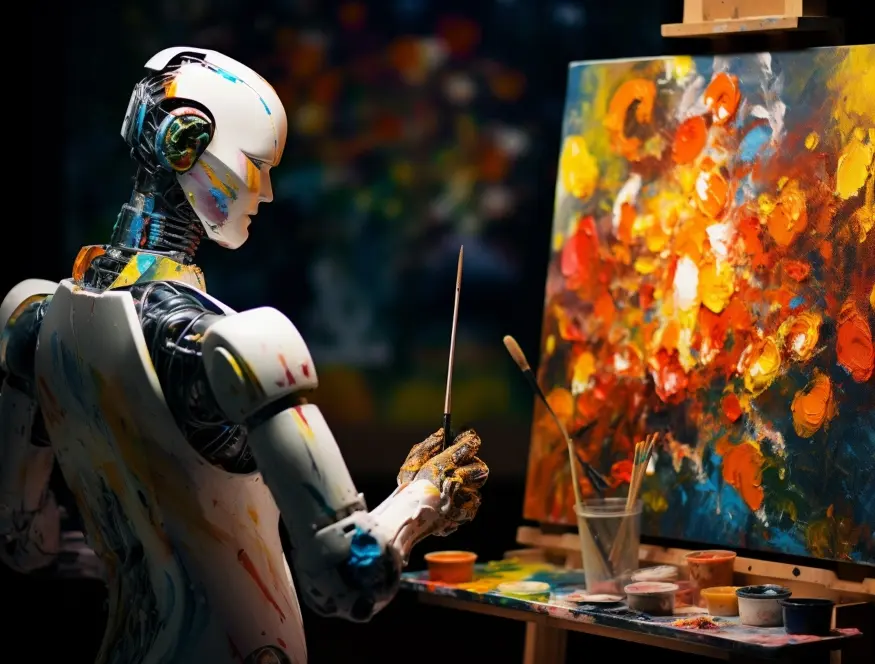Artificial Intelligence (AI) is now part of almost everything we do. It powers our apps, shapes how businesses operate, and even changes the way we think about work. For some, AI is a game-changer that brings speed and opportunity, for others it feels like a threat that could replace millions of workers. Businesses now rely on AI to analyze data, predict trends, automate decisions, and enhance customer experiences.
While some celebrate AI as a technological revolution that drives innovation and efficiency, others see it as a disruptive force that could displace millions of workers. This growing tension raises a crucial question: Will AI take away jobs, or will it create new ones?
AI as a Job Killer

The fear of machines replacing humans isn’t new. During the Industrial Revolution, workers worried that machines would make them obsolete. When computers emerged, clerical and administrative jobs were redefined. However, AI feels different because it doesn’t just automate manual labor, it can now perform tasks that involve reasoning, problem-solving, and even creativity.
1. Automation of Routine Work
Self-driving cars may replace drivers, while chat bots reduce the need for customer service agents. In transportation, self-driving vehicles could eventually reduce the demand for drivers in logistics, taxis, and delivery services.
In manufacturing, smart robots perform assembly, packaging, and quality checks faster and with fewer errors than humans.
This automation boosts efficiency but also threatens millions of low- and mid-skilled jobs globally.
2. Algorithmic Efficiency
AI can process huge amounts of data in seconds, creating pressure on analysts, researchers, and clerical workers. Banks and insurance firms now use AI to detect fraud, assess risk, and process claims, minimizing the need for large human teams.
Media and publishing companies employ algorithms to write basic reports or summarize news stories automatically.
Administrative roles, including data entry and scheduling, are increasingly replaced by intelligent systems. The result is a labor market where human roles must evolve from performing routine tasks to managing, interpreting, and improving AI systems.
3. Industry Restructuring
Entire professions could fade away as companies embrace AI-based business models. In retail, cashier-less stores like Amazon Go use AI and sensors to track purchases and automate checkouts.
In finance, robo-advisors provide personalized investment recommendations, reducing reliance on traditional financial advisors.
In journalism, AI tools generate sports updates, weather forecasts, and financial summaries, cutting down manual reporting needs.
This restructuring can lead to job polarization, where high-skill tech roles grow while mid-level routine jobs shrink, widening inequality.
AI as a Job Creator

While automation eliminates certain jobs, AI also opens new doors for employment, innovation, and entrepreneurship. Every technological revolution from electricity to the internet has created more jobs than it destroyed over time. AI is no exception.
1. New Career Paths
Demand is growing for AI engineers, data scientists, and other tech experts. AI engineers, data scientists, machine learning specialists, and AI ethicists are among the fastest-growing careers globally.
Support roles such as AI trainers, prompt engineers, and model explainability analysts are also emerging to ensure AI systems learn accurately and operate ethically.
Beyond tech, new opportunities appear in AI-driven marketing, product design, and content creation. The challenge is ensuring that workers acquire the right skills to seize these new roles.
2. Human + AI Teamwork
AI is not replacing humans it’s augmenting them. The most productive workplaces are those where people and AI collaborate.
In healthcare, AI analyzes scans and predicts diseases early, while doctors use these insights to make life-saving decisions with empathy and judgment.
In education, AI personalizes learning paths for students, freeing teachers to focus on mentorship, motivation, and emotional support.
In architecture and design, AI generates design concepts, but human creativity decides aesthetics and cultural fit. The synergy between human intelligence and artificial intelligence amplifies both efficiency and innovation.
3. Boosted Productivity
By taking care of repetitive tasks, AI allows people to focus more on creativity, strategy, and problem-solving. AI helps workers focus on what truly matters creativity, strategy, and innovation.
In marketing, AI tools analyze audience behavior, allowing teams to create more targeted campaigns.
In law, AI quickly reviews legal documents, giving lawyers more time for complex analysis and client relations.
In agriculture, AI-driven drones monitor crops, reducing waste and improving yield prediction.
When repetitive work is automated, businesses become more competitive and workers more productive.
4. Growing Industries
Fields like fintech, cyber security, renewable energy, logistics, and entertainment are expanding thanks to AI.
Fintech is using AI to expand financial inclusion across Africa and Asia.
Cybersecurity now relies on AI to detect and neutralize threats in real time.
Renewable energy companies use AI to forecast energy output and manage smart grids.
Entertainment industries use AI for video editing, music composition, and virtual production, creating fresh creative opportunities. AI is thus driving both technological and economic growth.
The Human Edge
Despite AI’s intelligence, machines still lack human depth—emotion, ethics, intuition, and context. The key to thriving in the AI era is to cultivate skills that machines cannot easily replicate.
1. Digital Literacy
Everyone from students to professionals must understand how AI works, its limits, and how to use it responsibly. This includes knowing how to manage digital tools, interpret data, and use automation effectively.
2. Soft Skills
Qualities like creativity, adaptability, emotional intelligence, and communication remain essential. For example, leaders who can inspire teams, negotiate with empathy, and make ethical judgments will always be in demand.
3. Lifelong Learning
The half-life of skills is shrinking. Workers must continuously update their knowledge through online courses, workshops, and professional certifications to stay relevant as technologies evolve.
4. Interdisciplinary Knowledge
Success in the AI era requires combining technical and humanistic understanding merging technology with ethics, data with business insight, and innovation with social awareness. This holistic mindset ensures technology serves humanity, not the other way around.
Navigating the Future

Building a fair and sustainable AI-driven economy requires more than just individual effort, it needs collective action. This includes:
- Reskilling and Upskilling: Governments, corporations, and educational institutions must invest in large-scale training programs to help workers transition into AI-related roles.
- Ethical Governance: AI development must be guided by principles that prevent bias, privacy violations, and discrimination.
- Public-Private Partnerships: Collaboration between industry leaders, policymakers, and educators can ensure AI benefits all sections of society.
- Inclusive Growth: Special attention should be given to developing countries to ensure AI-driven opportunities reach underrepresented communities.
Conclusion
AI is not simply a threat or a blessing it’s a mix of both. Like past technological revolutions, it will replace some jobs but also create new ones. The real question is how we adapt: by upgrading skills, adjusting strategies, and ensuring opportunities are shared fairly.
Instead of seeing AI as a rival, we should view it as a partner for progress. The future of work will not be humans versus machines but rather, humans and machines working together to build a smarter, more productive, and inclusive world.